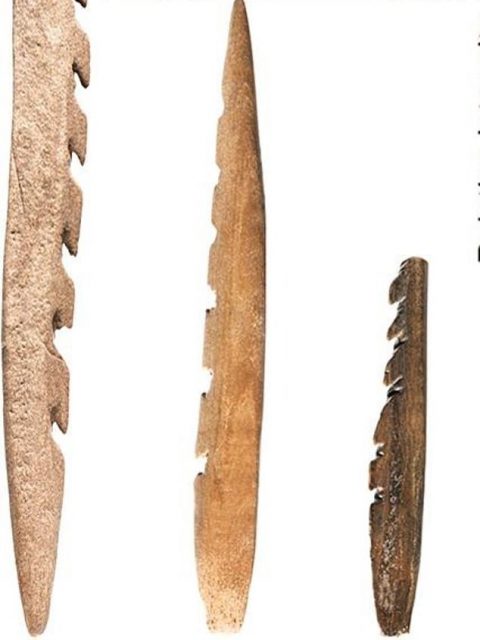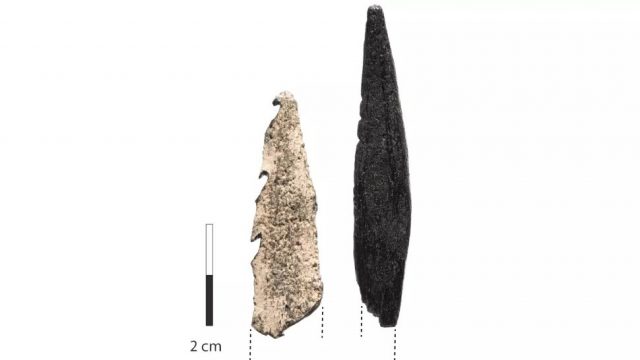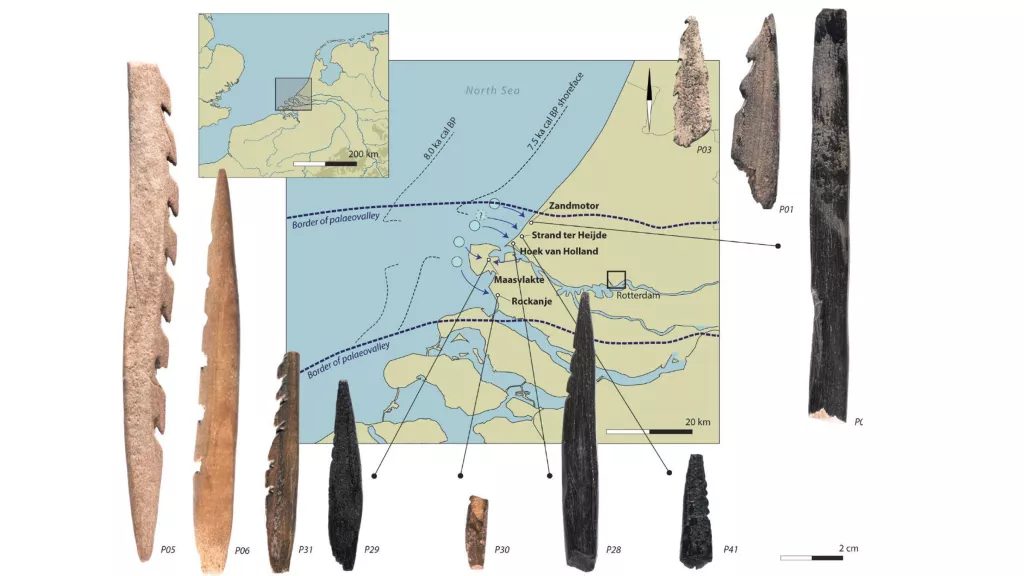Looks like Stone Age people used human bones to make weapons! A grisly discovery on a Netherlands shoreline is making a violent point about life during the Mesolithic era, or Middle Stone Age.
What appear to be multiple arrow points – the smallest being approx 9 cm – have washed up from the North Sea. Dated to between 5300 – 7500 BC, they’re certainly in used condition – various markings indicate a brutal purpose.
What that was isn’t entirely clear but as the Daily Mail writes, experts are “certain the points were used in projectile weapons, probably arrows but possibly spears.”
As reported by Live Science, these sharp objects may have been attached to handles, thrown javelin-style or shot from a bow. It also appears the barbs were re-sharpened for repeat outings.

Archaeologists put a sample of 10 under the microscope and the results surprised them. According to the Mail 7 of the barbs were animal, specifically red deer bones plus antlers, and 2 were of human origin. The team worked out the species by analyzing bone protein.
Their findings are published in Feb 2021’s Journal of Archaeological Science. The report states the use of bone is “unlikely to have been opportunistic and instead seems to be strategic in nature.”
So what was the strategy? Speaking to report co-author and student Johannes Dekker of Leiden University, Live Science says human bone “isn’t an especially great material for crafting sharp weapons”. The raw material needed to be obtained swiftly for optimum carving.
What was the use then? The answer might lay in spiritual terms rather than practical ones. Dekker and co believe the hunters utilized the bones of warriors, heavily modifying them so their soul lived on through weaponry. That way the qualities of a mighty slayer could be transferred to a new generation.
It’s just a theory – the Science Alert website highlights the team’s view that red deer were plentiful, making for prevalent spearing material. Spare humans with substandard bones may have served as an alternative if supplies were low.
On the flipside, the site mentions a hypothesis that “red deer bones could have reflected some form of culture-specific meaning or symbolism attributed to the species.”
Dekker is convinced of a cultural reason behind the use of human bones. He’s delighted with the find. “It wasn’t even in my wildest dreams that there would be humans among them” he tells Live Science.
Why are bone points washing up in the Netherlands in the first place? Well, before the North Sea existed the area was a land mass called Doggerland. This became lost beneath the waves following the devastating Storegga Slide of 6100 BC. The Slide was in fact 3 underwater landslides that triggered a huge tsunami.
The name Doggerland comes from the area of Dogger Bank, as reported by Live Science. What’s a Dogger? It’s a medieval fishing vessel known to have frequented the shallow waters there.
While the people of Doggerland were lost, their artifacts tend to be delivered by the waves every so often. Discoveries have increased in recent years, thanks to dredging of the seafloor.

Dekker and the team also looked at the carbon and nitrogen in these bone barbs. The elements gave them information about what animals and humans on Doggerland consumed. As Live Science notes, the deer had a plant based diet whereas people feasted on meat.
There is also speculation on what part of the human skeleton was used for the barbs. Dekker believes that arm or leg bones are likely candidates. He stresses the importance of further research to find out how popular human-based weapons were in these communities.
Another Article From Us: Point Nemo: A Spacecraft Cemetery That’s Two Miles Under the Pacific Ocean
It’s difficult to draw much in the way of conclusive proof from ancient history. However this particular case makes some interesting points… rather sharp ones by the looks of things!
